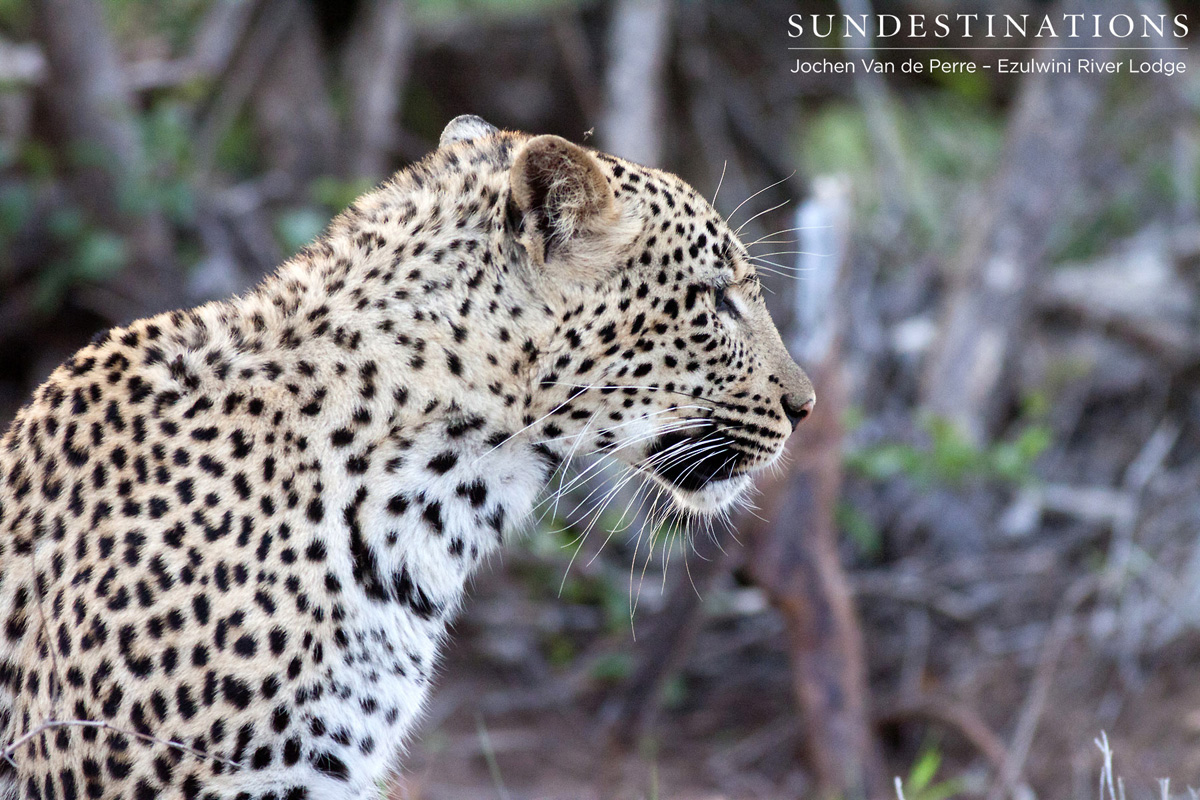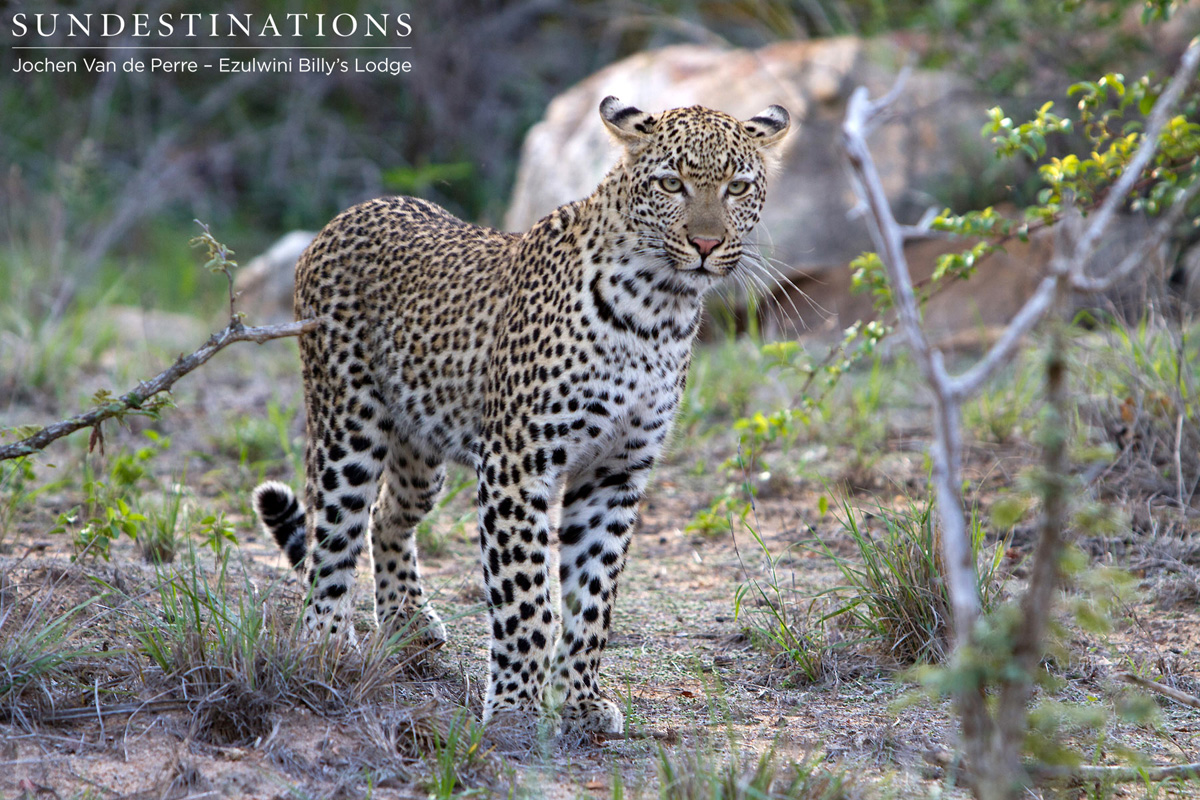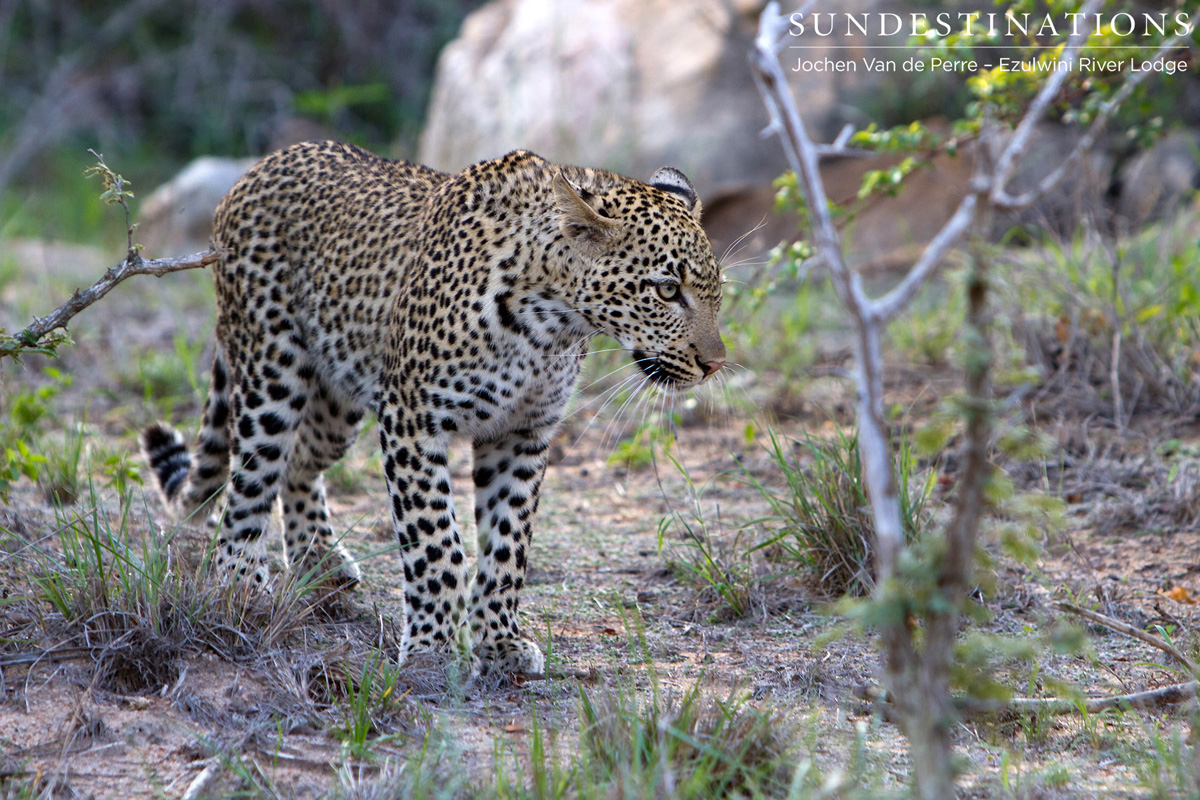
The Van Wijk’s leopardess is a small, yet powerful cat often spotted on Ezulwini’s traverse. She loves nothing more than to be in the limelight and never misses an opportunity to have her photo taken. Alongside Chavaluthu, the blue-eyed boy of the Balule, she’s one of the most commonly spotted leopards while out on game drive. A couple of nights ago, the leopardess was spotted patrolling her turf. Seemingly relaxed and confident, she let guests and guides watch her antics for about 20 minutes before she sauntered back into the thickets.
If you recall, about 1 month ago, Chavaluthu was heard contact calling for female company. There happened to be two leopards at the time – the Van Wijk’s female and an unknown leopardess. The unknown leopardess has not been seen in a while but the Van Wijk’s female is now part of Ezulwini’s regular cat sightings. Hopefully Chavaluthu will sire cubs with the leopardess!
In the meantime, here are 5 interesting facts about female leopards. Hopefully this will help to understand the Van Wijk’s behaviour.
- A leopardess can give birth at any time of the year and, on average, gives birth to two cubs which are bundles of grey fluff with undeveloped rosette patterns. The cubs stay with their mother for the first two years and then pursue the solitary lifestyle of leopards.
- A leopardess will defend her territory against other females but does tend to tolerate overlap from their neighbours, which is probably why the unknown female and Van Wijk’s female were seen in the same vicinity. Perhaps once of them was crossing back to its turf. Being aloof creatures, these cats will avoid each other rather than confront.
- A male leopard is a lot larger and stockier than a female.
- There is speculation that a leopardess can determine if a male is the territorial male and has the ability to remain dominant in that area for a long period of time. If he isn’t the “warrior” of the area she’ll sense it and make herself less fertile! This is a clever tactic – if the male is ousted from his territory, then a new male could come in and kill off the cubs.
- To avoid infanticide from males a female will mate with more than one male. Males normally kill off cubs sired by other males when they want to mate with a leopardess. Killing off the cubs sends the female back in oestrus.






Leave a Comment